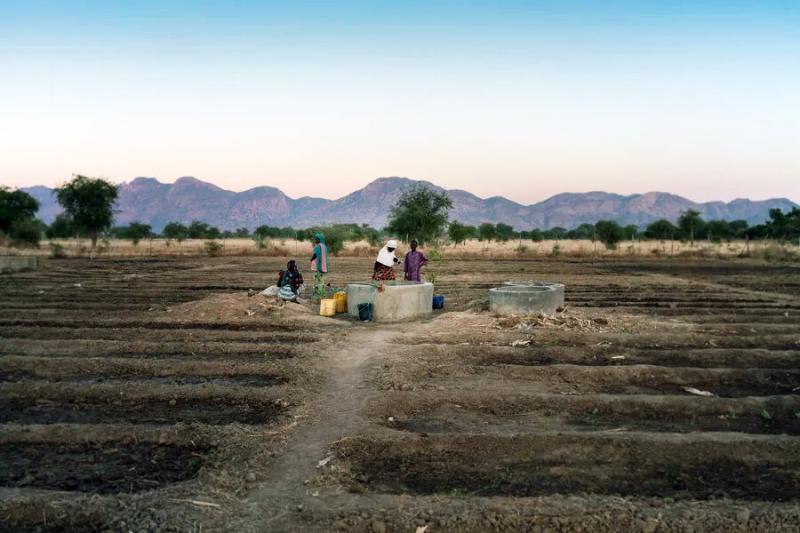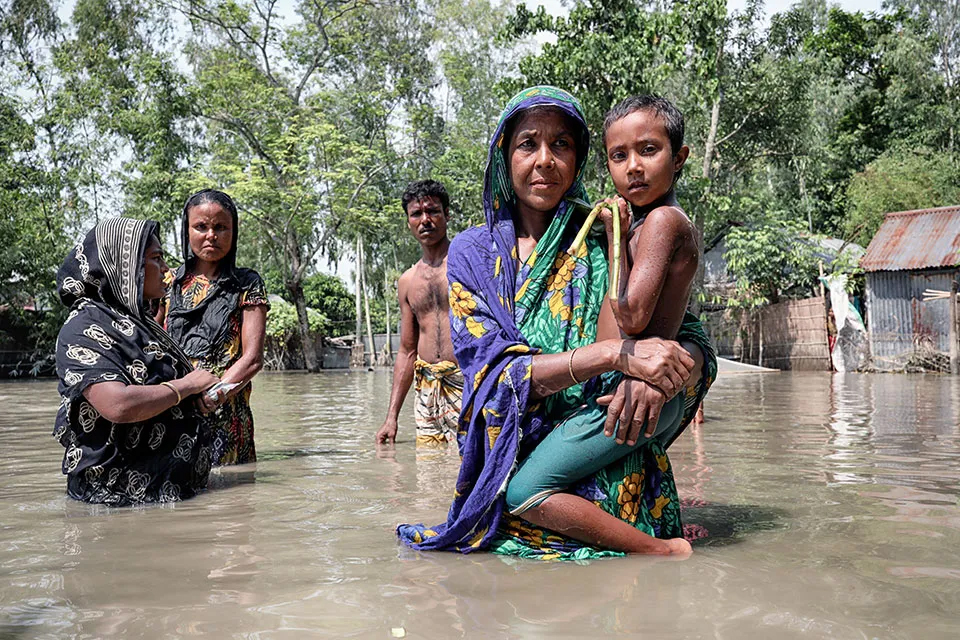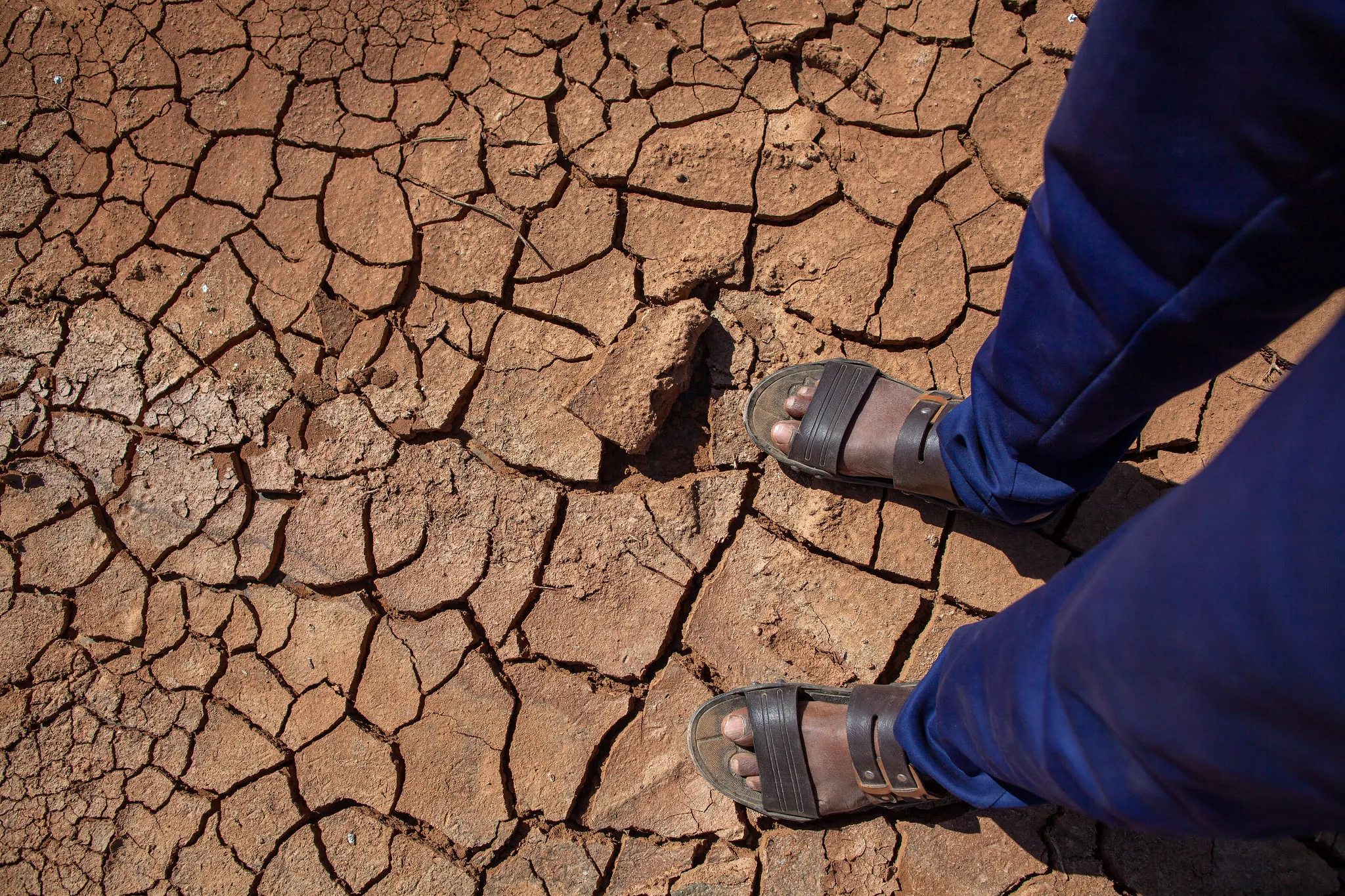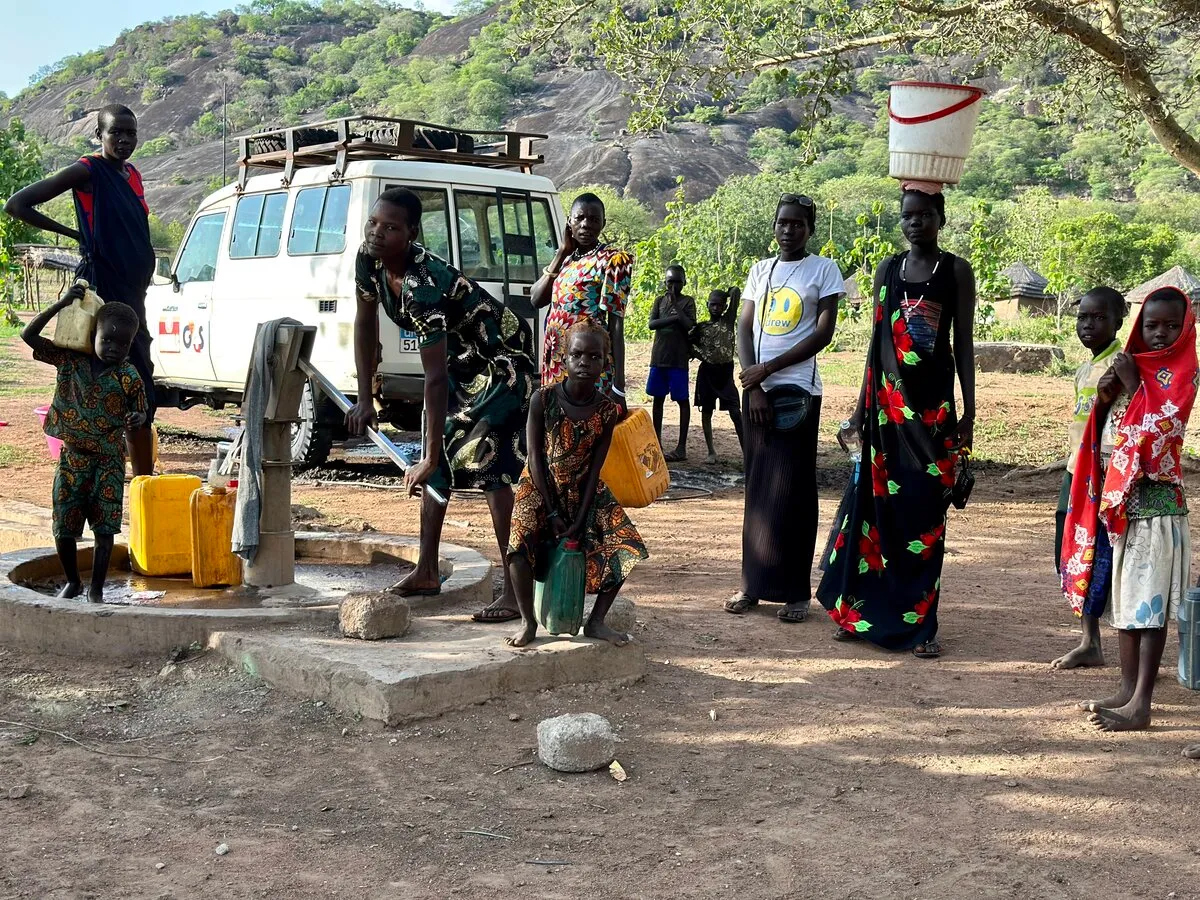

With climate change multiplying risks, especially in areas more vulnerable to conflict, climate action needs to become an integral part of preventive diplomacy and peacebuilding efforts, not least as it could open up opportunities for dialogue.
In this story we look at how DPPA is integrating climate and environmental considerations in its work and the role of Climate, Peace and Security Advisors in special political missions.
2023 was an extreme year for both climate and conflict. Last year alone, conflicts increased by 12 per cent compared to 2022. At the same time, 2023 was the hottest year ever recorded, with global average temperatures reaching 1.48°C above pre-industrial levels.
Both extreme climate events and conflicts can cause food and water shortages, worsening security risks. In some regions, scarcity of natural resources can also lead to displacement of populations or fuel competition over these resources, both potentially leading to conflict. In 2022, climate-related disasters were responsible for more than half of new reported displacements. And today, 60 per cent of refugees and internally displaced people live in countries that are among the most vulnerable to climate change.
“Climate disasters and conflict both inflame inequalities, imperil livelihoods, and force people from their homes,” UN Secretary-General António Guterres said during a Security Council’s debate on 13 February 2024, adding that “conflict can easily be sparked where tensions are high, institutions are weak, and people are marginalized.”
In some regions, the effects of climate change on peace and security are already visible. For instance, in the Sahel, droughts and erratic rainfall patterns have altered traditional transhumance practices, leading to increased tensions between farmers and herders over diminishing water and land. Overall, climate change impacts women disproportionately. By 2050, climate change will push up to 158 million more women and girls into poverty and lead to 236 million more women into hunger.

Recognizing and addressing the linkages between climate change and peace and security risks is increasingly important when it comes to preventing conflicts and sustaining peace, as part of the work of several special political missions (SPMs) managed by DPPA.
“Understanding the changes that are happening as a result of climate change, how that will impact a country, and what issues will emerge because of that will make UN field missions generally more effective,” Andrea Dekrout, Climate, Peace and Security (CPS) Advisor for the UN Assistance Mission for Iraq (UNAMI) told Politically Speaking.
CPS advisors help integrate climate and environmental considerations in the work of UN field missions, analyzing where peace and security link to climate change threats.
These threats are context-specific, but include extremes such as droughts and floods, which have, for instance, already affected economic and political stability, contributed to displacement of people across borders or compromised the operations of political and peacekeeping missions in the Horn of Africa, explained Elizabeth Carabine, CPS Advisor for the Office of the Special Envoy in the region.

As climate change is a cross-cutting issue, CPS advisors collaborate across the UN System, and their analysis informs the work of UN agencies and programmes operating in their country or region.
CPS advisors are present in five SPMs — UNSOM, UNAMI, UNOCA, UNAMA, OSE-HoA — and one peacekeeping operation (UNMISS). The team of advisors looks set to expand to more missions this year, and efforts are also underway to regularize their posts.
“Having positions like mine in more of the missions makes a big difference,” Dekrout said, pointing at the positive impact of designing policies and projects which include peace positive climate adaptation approaches.
CPS advisors are funded through the Climate Security Mechanism (CSM), established in 2018 by DPPA, together with the Department of Peacekeeping Operations (DPO), the UN Development Programme (UNDP) and the UN Environment Programme (UNEP).
The CSM promotes integrated UN action on climate, peace and security and aims to reinforce the capacity of UN field missions, Resident Coordinator Offices (RCOs), country teams and regional and subregional organizations to analyze climate-related peace and security risks.
In the Horn of Africa, the Office of the Special Envoy has worked closely with regional counterparts to extend the reach of the CSM, working with the Member States of the Intergovernmental Authority on Development (IGAD) who have decided to establish an IGAD Regional Climate Security Coordination Mechanism, for a broader response to climate-related security risks.
Addressing peace and security risks induced by climate change can help foster cooperation at different levels and represents an opportunity for dialogue.
A regional approach to addressing climate change impacts is particularly relevant when more countries or border regions are affected. As Carabine explained, “it’s very difficult, for example, to address a humanitarian response to the drought in northern Kenya, if you’re ignoring that it’s also affecting southern Ethiopia, when people are moving and trading across the border.”
In order to support the IGAD Regional Climate Security Coordination Mechanism, the Special Envoy for the region has set up a UN Climate, Peace and Security Hub for the Horn of Africa. This is in line with recommendations in the New Agenda for Peace, which recognizes the link between climate action and sustaining peace.
According to the New Agenda for Peace, the hubs could help connect national and regional experiences and provide technical advice to Member States. They could also help bring in climate finance, especially for the most vulnerable places, and introduce an effective risk monitoring system.

While interest in climate finance is growing, funds are still only marginally reaching the most in need, mostly due to the difficulty in accessing or operating in conflict zones.
The problem was recently raised at COP28, held in December 2023, and led to the adoption of the Declaration on Climate, Relief, Recovery and Peace, which calls for greater climate finance flows to fragile and conflict-affected areas.
The UN Secretary-General’s Peacebuilding Fund is also supporting peacebuilding projects with a climate-security or environmental peacebuilding component since 2016, totalling more than $130 million. For instance, a PBF project implemented by UNDP and UNICEF supported water infrastructures in Kassala state, Sudan, and is expected to alleviate communal and inter-tribal tensions over water scarcity.
Besides finance, another key aspect to address the link between climate change and peace is data collection and monitoring. Data collection can support the work of CPS advisors by informing their analysis, for instance by understanding the reasons why people move from one area to another. But there are limitations.
“The difficulty with climate change is trying to forecast what might happen. Obviously, UNEP and other parts of the UN are very good at that projection, but it’s still quite challenging to get the security implications, except in very broad terms,” Carabine explained.
Yet, monitoring and analyzing existing and potential climate impacts is key to ensuring climate adaptation works, and that it also contributes to peace and security. Similarly, a sound conflict analysis is key to ensuring that climate adaptation projects do not aggravate existing conflicts or create new ones.
“People that don’t have good options may be forced into survival modes that do not promote peace or that put them at greater risk because of either conflict or displacement,” Dekrout said.
“The way that we respond to [climate change] can be positive — promoting innovation and inclusion, creating new ways of living — and can produce new opportunities. And if we invest in that, people will have better options, and that definitely underpins peace and security,” she concluded.
Cover photo: WFP/Evelyn Fey
Originally published on www.medium.com